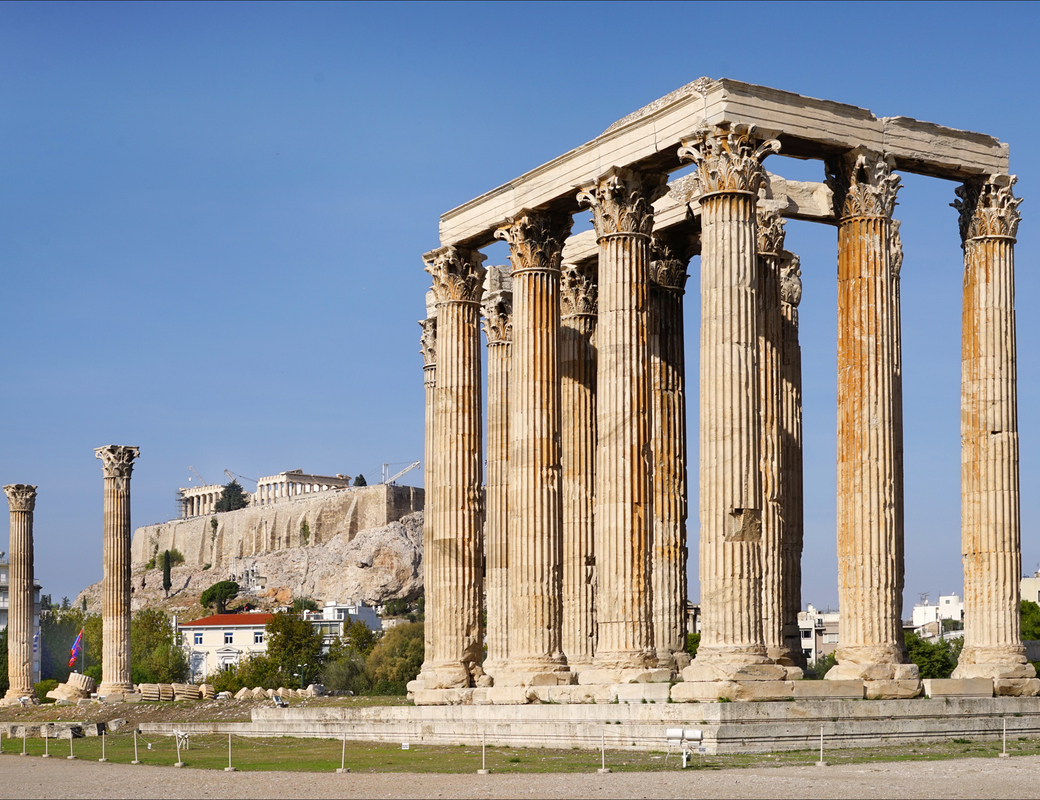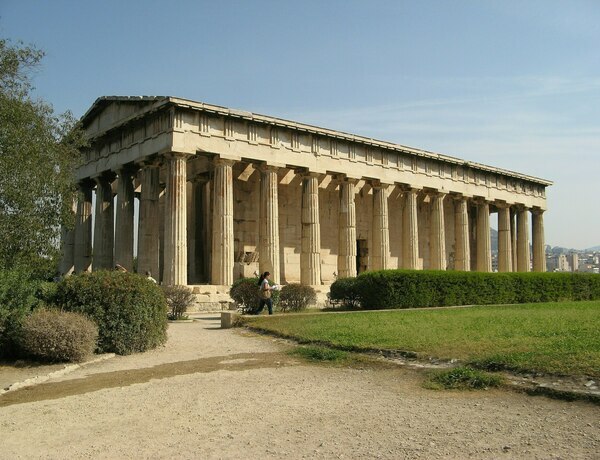
The Temple of Olympian Zeus is an ancient temple located in the center of Athens, Greece. It is dedicated to Zeus, the king of the gods in Greek mythology, and it is one of the largest and most impressive temples of the ancient world.
The construction of the Temple of Olympian Zeus began in the 6th century BC, during the reign of the Athenian tyrant Peisistratus. However, the temple was not completed until the reign of the Roman emperor Hadrian in the 2nd century AD, more than 600 years later. The temple had 104 columns, each standing 17 meters tall, making it one of the largest temples in the ancient world.
Today, only 15 of the original columns remain standing, along with some other architectural elements of the temple, including the ruins of the sanctuary, the cella, and the east and west pediments. The temple is an impressive sight, even in its partially ruined state, and it is a popular tourist attraction in Athens.
The Temple of Olympian Zeus is located in a large park area known as the “Archaeological Site of Olympieion.” The park is a peaceful and picturesque oasis in the heart of the city, with lush greenery and beautiful views of the temple and the surrounding landscape. Visitors can stroll through the park, take photos of the temple, and learn about its fascinating history through the on-site informational displays.
Website
odysseus.culture.gr
odysseus.culture.gr





